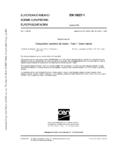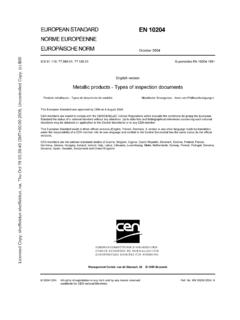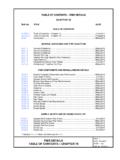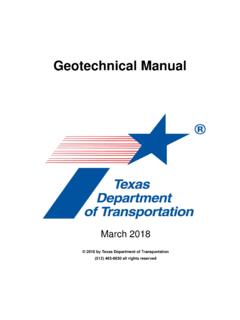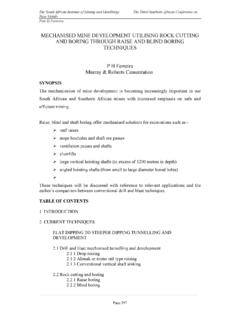Transcription of EUROPEAN STANDARD EN 10246-1 - sanyosteel.com
1 EUROPEAN STANDARDNORME EUROP ENNEEUROP ISCHE NORMEN 10246 -1 March 1996 ICS : Metal tubes, steel tubes, welded tubes, seamless tubes, non-destructive tests, electromagnetic tests, inspection,leak-tightnessEnglish versionNon-destructive testing of steel tubes Part 1: Automatic electromagnetic testing of seamless and welded (except submerged arc-welded) ferromagnetic steel tubes for verification of hydraulic leak-tightnessEssais non destructifs des tubes en acier Partie 1: Contr le automatique lectromagn tique pour v rification de l tanch it hydraulique des tubes en acier sans soudure et soud s ferromagn tiques (sauf l arc immerg sous flux en poudre)Zerst rungsfreie Pr fung von Stahlrohren Teil 1: Automatische elektromagnetische Pr fung nahtloser und geschwei ter (ausgenommen unterpulvergeschwei ter) ferromagnetischer Stahlrohre zum Nachweis der DichtheitThis EUROPEAN STANDARD was approved by CEN on 1995-12-28.
2 CEN members are bound to comply with the CEN/CENELEC Internal Regulations which stipulate the conditions for giving this EUROPEAN STANDARD the status of a national STANDARD without any lists and bibliographical references concerning such national standards may be obtained on application to the Central Secretariat or to any CEN EUROPEAN STANDARD exists in three official versions (English, French, German). A version in any other language made by translation under the responsibility of a CEN member into its own language and notified to the Central Secretariat has the same status as the official members are the national standards bodies of Austria, Belgium, Denmark, Finland, France, Germany, Greece, Iceland, Ireland, Italy, Luxembourg, Netherlands, Norway, Portugal, Spain, Sweden, Switzerland and United Committee for StandardizationComit Europ en de NormalisationEurop isches Komitee f r NormungCentral Secretariat: rue de Stassart 36, B-1050 Brussels 1996 Copyright reserved to CEN membersRef.
3 No. EN 10246 -1:1996 EEN10246-1:1996 BSI 02-19992 ForewordThis EUROPEAN STANDARD has been prepared by the Technical Committee ECISS/TC29, Steel tubes and fittings for steel tubes, the secretariat of which is held by EUROPEAN STANDARD shall be given the status of a national STANDARD , either by publication of an identical text or by endorsement, at the latest by September 1996, and conflicting standards shall be withdrawn at the latest by September to the CEN/CENELEC Internal Rules, the national standards organizations of the following countries are bound to implement this EUROPEAN STANDARD : Austria, Belgium, Denmark, Finland, France, Germany, Greece, Iceland, Ireland, Italy, Luxembourg, Netherlands, Norway, Portugal, Spain, Sweden, Switzerland and 21 Scope32 Normative references33 General requirements34 Method of test35 Reference standards46 Dimensions of reference notch87 Equipment calibration and checking98 Acceptance99 Test reporting10 Annex A (informative) Table of Partsof EN 10246 Non-destructivetesting of steel tubes11 Annex B (informative)
4 Guidance noteson limitations associated with eddycurrent and flux leakage test methods12 Figure 1 Simplied diagram of eddy current concentric coil technique4 Figure 2 Simplified diagram of rotating tube/pancake coil eddy current technique (helical scan5 Figure 3 Simplified diagram of rotatingmagnetic transducer/tube flux leakagetechnique6 Figure 4 Simplified diagram of typicalmagnetic transducer/tube flux leakagetechnique7 Figure 5 N type notch8 Figure 6 Transverse notch-forms8 Table 1 Tube diameter related drill sizesto produce the reference holes7EN10246-1:1996 BSI 02-199931 ScopeThis Part of EN 10246 specifies the requirements for automatic electromagnetic testing of seamless and welded ferromagnetic steel tubes, with the exception of submerged arc-welded (SAW) tubes, for verification of hydraulic Part of EN 10246 is applicable to the inspection of tubes with an outside diameter greater than or equal automatic eddy current testing of seamless and welded austenitic and austenitic-ferritic steel tubes (excluding SAW tubes))
5 , for verification of hydraulic leak-tightness, EN10246-2 STANDARD EN 10246 Non-destructive testing of steel tubes comprises the Parts shown in Annex Normative referencesThis Part of EN 10246 incorporates by dated or undated reference, provisions from other publications. These normative references are cited at the appropriate places in the text and the publications are listed hereafter. For dated references, subsequent amendments to or revisions of any of those publications apply to this Part of EN10246, only when incorporated in it by amendment or revision. For undated references the latest edition of the publication referred to 20286-2, ISO system of limits and fits Part2:Tables of STANDARD tolerance grades and limit deviations for holes and shafts.
6 ENV 10220, Plain end steel tubes, welded and seamless General tables of dimensions and masses per unit length. ISO 235, Parallel shank jobber and stub series drills and Morse taper shank drills. 3 General The electromagnetic inspection covered by this Part of EN 10246 is usually carried out on tubes after completion of all the primary production process inspection shall be carried out by suitably trained, qualified and competent NDT personnel approved by the The tubes to be tested shall be sufficiently straight to ensure the validity of the test. The surfaces shall be sufficiently free from foreign matter which would interfere with the validity of the Method of Test The tubes shall be tested for verification of hydraulic leak-tightness by either the eddy current method or flux leakage method using one of the following ) Concentric coil (eddy currentmethod) see Figure ) Rotating tube/pancake coil (eddy current method) see Figure ) Rotating tube/magnetic transducer (flux leakage method) see Figure ) Multiple concentric magnetic transducers (flux leakage method)
7 See Figure 1It is recognized that there may be, as in the case of hydraulic testing under normal production conditions, a short length at both tube ends which cannot be 2 For guidelines on the limitations of the eddy current and flux leakage test methods, seeAnnex When testing seamless or welded tubes using the eddy current concentric coil technique, the maximum outside diameter tube to be tested is restricted to 177,8 or rectangular tubes, used for structural purposes, with a maximum dimension across the diagonal of177,8mm may also be tested using this When testing seamless or welded tubes using the rotating tube/pancake coil eddy current technique or rotating tube/magnetic transducer flux leakage technique, the tube and the pancake coils/magnetic transducers shall be moved relative to each other so that the whole of the tube surface is scanned.
8 The chosen relative speed of movement during testing shall not vary by more than 10%. There is no restriction on the maximum outside diameter using these When testing seamless and welded tubes using the multiple concentric magnetic transducer technique, the tube and the multiple transducer assembly shall be linearly moved relative to each other so that the whole of the tube surface is scanned. There is no restriction on the maximum outside diameter using this Test equipmentThe equipment shall be capable of classifying tubes as either acceptable or suspect by means of an automatic trigger/alarm level combined with a marking and/or sorting :19964 BSI 02-19995 Reference The reference standards defined in this Part of EN 10246 are convenient standards for the calibration of non-destructive testing equipment.
9 The dimensions of these standards should not be construed as the minimum size of imperfection detectable by such The testing equipment shall be calibrated using reference standards introduced into a tubular test piece. The test piece shall be of the same specified diameter, thickness and surface finish as the tube to be tested and shall have similar electromagnetic special cases, for example testing hot tubes or using equipment contained within a continuous tube mill, a modified calibration or calibration checking procedure can be used, by The reference standards for the various testing techniques shall be as follows:a) a reference hole or holes as defined in when using the eddy current concentric coil technique;b) a reference notch as defined in when using the rotating tube/pancake coil eddy current technique or the rotating tube/magnetic transducer flux leakage technique.
10 C) a reference notch (or equivalent hole) as defined in when using the multiple concentric magnetic transducer flux leakage Eddy current concentric coil techniqueWhen using the eddy current concentric coil technique, the test piece shall contain three circular holes, drilled radially through the full thickness of the test piece. The three holes shall be circumferentially displaced 120 from each other, and shall be sufficiently separated longitudinally and from the extremities of the test piece so that clearly distinguishable signal indications are , only one hole shall be drilled through the full thickness of the test piece and during calibration and calibration checking the test piece shall be passed through the equipment with the hole positioned at 0 , 90 , 180 and 270.
